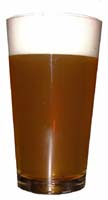 |
 |
 |
||||
|
1. What is FTP?The process by which files are transferred to the web server is called "FTP" (File Transport Protocol). You have unlimited access via FTP 24-hours a day. As such, you can create and maintain your web pages on your own computer and upload files to your web site at your leisure. Internet providers such as AOL, CompuServe, and Prodigy may have a built-in FTP interface. If you have a PPP internet account and need an FTP program, you can download software for the PC from the E-Brewer.Com web site. We suggest that you contact your local internet provider to inquire about compatibility. Note: If you are a FrontPage user, you should not use an FTP program for uploading your regular web pages, but rather upload such data with FrontPage itself. For more info on this matter, please refer to our FrontPage Support page. Of course, you may wish to obtain an FTP program in order to work on files outside of the frontpage directory structure, such as your .domains file, which controls mail forwarding. Back to FAQ Main2. What FTP Software Do You Suggest?Win95 Users:We recommend using an excellent shareware program called WS_FTPle, or another program called CuteFTP. You can download WS_FTPle for free at: You can download CuteFTP for free at: Mac Users:If you are a Mac user, we suggest that you try Fetch, which may be downloaded for free at: or at: Back to FAQ Main3. How Do I Place My Files On The Web Server?When you connect to the web server, you will connect directly to the root ("home") directory of your account. WS_FTP will display a split screen where files on the left-hand side are within your own computer. You will see several folders on the right-hand side such as cgibin, docs, and logs, as well as files such as .domains and .mreply.rc. These are landmarks suggesting a successful connection to your web site. You should upload the files you want visible to people's web browsers to your DcumentRoot. The actual name of this directory should be listed in the setup email you received when your account was created. If you no longer have a copy of that email, one is available on your web site at: http://YOURDOMAIN.com/setup Generally speaking, Frontpage accounts will have a
DocumentRoot of: Non-Frontpage accounts should have a DocumentRoot of:
/YOURDOMAIN/www/ If you are unsure of which directory to use, contact us here. If you have custom cgi scripts, upload them to the /cgibin directory. To make your home page load automatically, name the HTML document "index.htm" or "index.html" in lowercase and upload it to the DocumentRoot. To upload a file or files, simply highlight the file(s) on the left and click the right-arrow button (=>) in the center of the screen. Be sure to upload HTML documents and scripts in ASCII mode and images in BINARY mode, we do not recommend using the "auto" setting. To transfer a file to a subdirectory, double-click the appropriate subdirectory to open it before transferring the desired file(s). As soon as a file is uploaded to the web server, it is available for all to see. If, after uploading a file, you are still unable to see the updated file via Netscape, you need to clear both disk and browser cache. This function can be found by selecting Options > Network Preferences in Netscape. In Internet Explorer, click on View, then Internet Options and click the Delete Files button in the Temporary Internet Files section. You can always use a query string added to the end of your url: http://YOURDOMAIN.com?abc This will force your browser to bypass its cache and get the latest copy of your index page from our server. Remember that you must first be connected to the internet through your local internet service provider in order to connect to the web server. Note: If you receive the "Blocking Call Canceled" error message, please review our traceroute tutorial. Notes to Mac Users
Back to FAQ Main |
|||||
